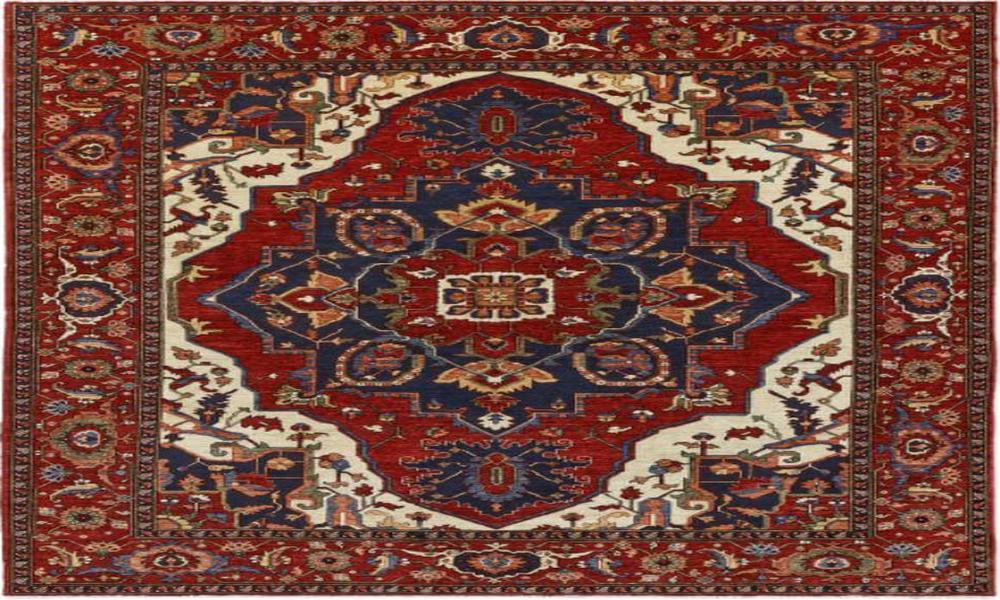Persian rugs can be classified according to several different criteria, including:
Region:
Persian rugs are traditionally named after the region where they are produced. Some of the most famous rug-making regions in Iran include Tabriz, Isfahan and Kerman, among others.
Design and Pattern:
Persian rugs are often classified according to their design and pattern. Some of the most common design styles include floral, medallion, geometric, and pictorial.
Knot Density and Material:
Persian rugs can also be classified according to their knot density, which refers to the number of knots per square inch. Rugs with a higher knot density are generally more intricate and valuable. Persian rugs can be made from a variety of materials, including wool, silk, cotton, and sometimes even metal threads. The type of material used can affect the rug’s appearance, texture, and durability.
Age and Size:
The age of a Persian rug can also be used as a classification criterion. Antique rugs are generally considered to be those that are over 100 years old, while vintage rugs are typically between 50 and 100 years old. Persian rugs can also be classified according to their size, with larger rugs typically being more valuable than smaller ones.
The classification of Persian rugs can vary depending on the criteria used. However, region, design and pattern, knot density, material, age, and size are some of the most common ways of categorizing these beautiful and valuable rugs.
How to clean Persian rugs in homes:
Cleaning Persian rugs at home requires special care and attention to avoid damaging delicate fibers and dyes. Here are some steps to follow for cleaning Persian rugs at home:
Vacuum: Begin by thoroughly vacuuming the rug on both sides to remove loose dirt and debris. Use a vacuum with a low suction setting or a handheld vacuum to avoid damaging the fibers.
Spot clean: If there are any stains on the rug, spot clean them immediately using a mixture of warm water and mild detergent. Use a clean, white cloth to gently blot the stain, working from the outside to avoid spreading the stain.
Wash: Fill a bathtub or large sink with cool water and add a mild detergent. Gently submerge the rug in the water and use a soft brush to gently scrub the fibers, working in the direction of the pile. Rinse thoroughly with cool water until no suds remain.
Dry: Lay the rug flat on a clean, dry surface or hang it up to dry in a well-ventilated area. Avoid exposing the rug to direct sunlight or heat, which can damage the fibers and fade the colors. Flip the rug over occasionally to ensure both sides dry evenly.
Brush: Once the rug is completely dry, use a soft brush or a vacuum with a brush attachment to gently fluff the fibers and restore the rug’s texture.




